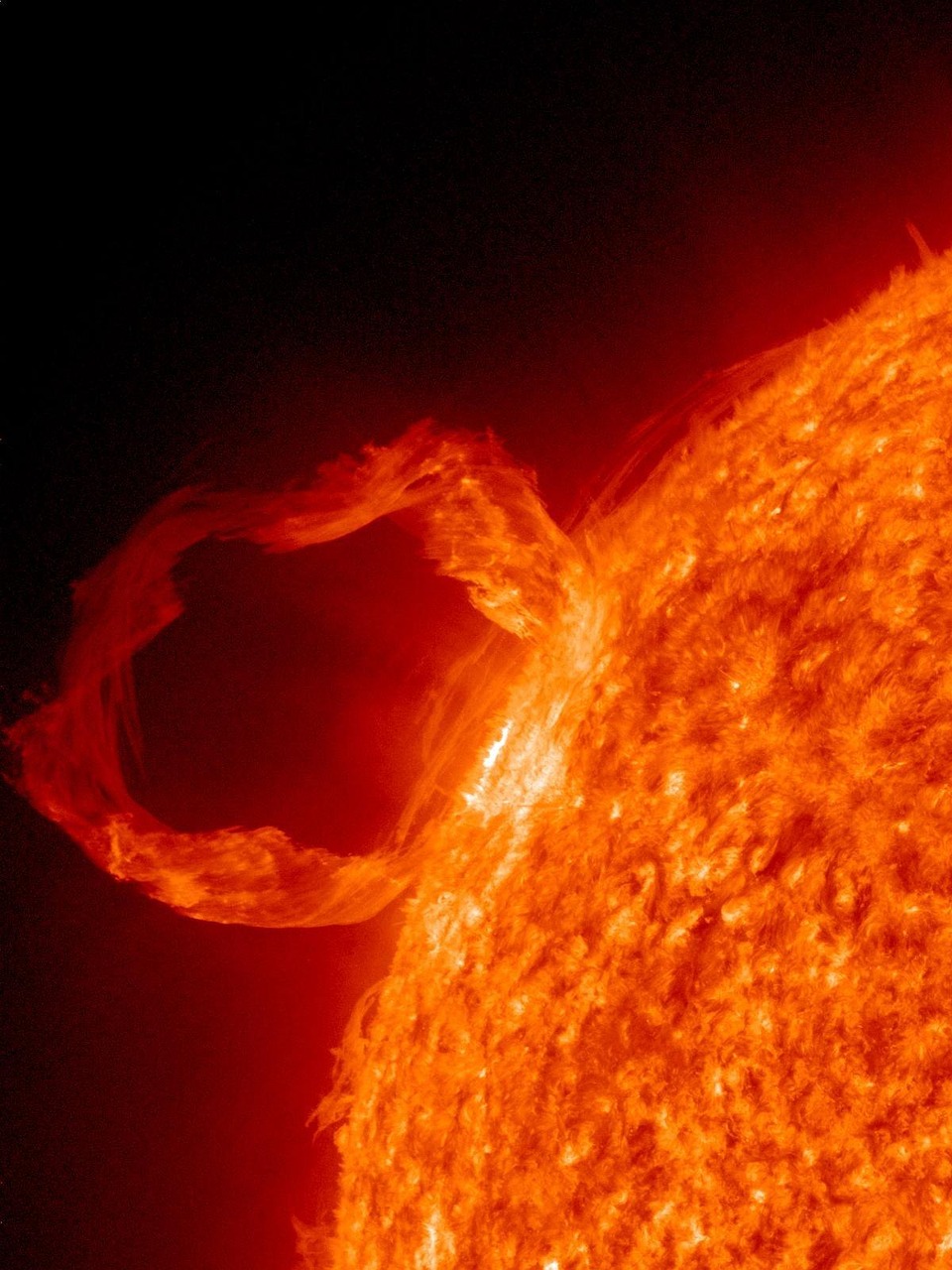Scientists are tracking a series of intense X‑class solar flares surge from sunspot regions heading toward Earth. These powerful eruptions can spark coronal mass ejections (CMEs) that penetrate our atmosphere’s magnetic envelope. If they strike with the right magnetic orientation, UK observers—even as far south as central England—might witness spectacular aurora borealis. While satellites, radio services, and power grids may experience mild disruptions, forecasters predict that clear, dark nights could offer dazzling light shows by midweek.
What Is a Solar Flare?
A solar flare is a sudden eruption of high-energy radiation from the Sun’s surface, linked to magnetic activity around sunspots. These outbursts produce energy across the electromagnetic spectrum—from radio waves to X-rays Bulb+2AR15+2End Time Headlines+2Scientific American+2The Washington Post+2Scot’s Newsletter Forums+2Bulb. Solar Flares surge vary in strength, with X-class being the most intense. A CME may accompany a flare, ejecting hot plasma and magnetic energy into space .
Why the Current Flares Matter
Solar Cycle Peak
We’re approaching solar maximum in 2025, an 11‑year cycle crest characterized by frequent sunspots and high flare activity Wikipedia+2The Washington Post+2Bulb+2.
Recent X‑Class Events
Several X‑flares detected this week have prompted geomagnetic storm watches, highlighting their potential to affect Earth Physics Forums+5Scot’s Newsletter Forums+5End Time Headlines+5.
CME Arrival Risk
CMEs roughly take 15–30 hours to travel from Sun to Earth. Authorities expect potential arrival by mid‑week, and are monitoring orientation .
Effects of CMEs on Earth
Northern & Southern Lights
Charged particles exciting upper-atmosphere gases can create auroras, visible farther south during strong geomagnetic storms Bulb.
Communications & Infrastructure
CMEs can disrupt radio communications, GPS signals, satellite ops, and power grids—though current forecasts indicate only minor to moderate G1–G2 level impacts Wikipedia+8Scientific American+8Bulb+8.
Timeline & Outlook
| Stage | Event Description |
|---|---|
| Sun → WA | X‑class flares and CMEs identified from sunspot clusters |
| CME propagation | Plasma travelling ~1,000 km/s toward Earth (~15–30 hrs duration) |
| Monitoring phase | NOAA, BGS, NASA tracking arrival and predicting magnetic orientation |
| Possible UK auroras | Best viewing if storms hit with southward magnetic alignment, mid‑week |
| Tech impact monitoring | Power & communications sectors advised to enact precautionary safeguards |
Why Aurora Could Paint UK Skies
In past intense storms—like the 1859 Carrington Event and the May 2024 G5 storm—auroras were spotted far from poles Bulb+5Wikipedia+5The Washington Post+5ShroomeryScot’s Newsletter Forums+1Wikipedia+1. Modern cameras and social media amplify sightings, even during moderate storms .
Precautions for While Storms Hit
- Watch for alerts from NOAA SWPC and British Geological Survey.
- Power companies may temporarily alter grid loads.
- Satellite services & aviation near polar routes should prepare for possible anomalies.
- Radio operators should anticipate potential HF blackouts.
- Public:
- Look north/east after sunset on clear nights.
- Use slow camera ISO/night mode to capture faint auroras.
Broader Context & Science
Auroral Science
Northern and Southern Lights result from solar particles colliding with Earth’s magnetic shield End Time Headlines+1Scientific American+1Democratic Underground+1The Washington Post+1.
Space Weather Monitoring
Instruments like SDO (Solar Dynamics Observatory) and ground-based geomagnetic stations play key roles in real-time monitoring Bulb+1Democratic Underground+1.
Space-Based Risks
Electrical surges from CMEs can degrade satellite orbits, affect GPS accuracy, and even increase drag on space debris Wikipedia.
Frequently Asked Questions (FAQs)
Q1: What does “X‑class” mean?
X‑class flares are the top-tier eruptions on NOAA’s scale. Each level up (M → X) reflects a tenfold increase in power Wikipedia+4The Washington Post+4Scientific American+4.
Q2: Will I definitely see aurora from the UK?
Not guaranteed—it depends on CME arrival and magnetic conditions. But during G2+ storms, auroras can be visible as far south as the UK Wikipedia+1Democratic Underground+1.
Q3: Are solar storms dangerous?
For individuals, no—but they can disrupt tech, aviation, and power systems. Infrastructure managers are on alert Bulb.
Q4: Has this happened before?
Yes. The 1859 Carrington Event caused telegraph lines to spark globally. More recent strong storms occurred in 2003 and 2024 Scot’s Newsletter Forums+3Wikipedia+3Bulb+3.
Q5: How to photograph aurora?
Use a tripod and long exposures (10–15 sec), with a camera ISO of 800–1600 in dark skies.
Q6: What’s the significance of magnetic orientation?
If the CME’s magnetic field is southward, it can link with Earth’s and penetrate upper atmosphere, intensifying auroras Scot’s Newsletter Forums.
Q7: Will communication still work?
Generally yes—especially for short storms. But minor interference in HF bands or GNSS isn’t impossible.
Final Thoughts
We’re on the brink of an exciting geomagnetic event. As solar activity peaks, UK skygazers may soon witness auroral displays dancing overhead. And while beautiful, these storms underscore our vulnerability to solar-driven disruptions. With smart forecasting and preparation, we can admire nature’s light show—and keep our systems secure.
Internal Links from The Breadline Bulletin
- UK Heatwave Triggers Record Wildfires and Emergency Water Bans in 2025
- UK Weather Report for July 12: Thunderstorms and Flash Flood Warnings
- NHS Doctors’ Strike: How It Impacts Patients and Appointments in July 2025
Resources & References
- Wikipedia: Solar flare and Carrington Event basics Shroomery+4Wikipedia+4Bulb+4
- May 2024 solar storms and aurora data Wikipedia+1Scientific American+1
- NOAA/NASA alerts on current X‑class flares
- Scientific American on CME impact and aurora
- BGS/NOAA guidelines on geomagnetic storm effects
Disclaimer
This article is based on space-weather data current as of 14 July 2025. Solar activity and forecasts may change rapidly. For critical systems, consult official space-weather warnings and technical guidance.
SEO Meta Info
SEO Title: Solar Flares May Ignite Aurora Borealis Over UK – July 2025 Forecast
Slug: solar-flares-aurora-borealis-uk-july-2025
Meta Description: X-class solar flares and CMEs are heading toward Earth. Could UK skies soon light up with aurora? Here’s what to expect, how it affects infrastructure, and viewing tips.


